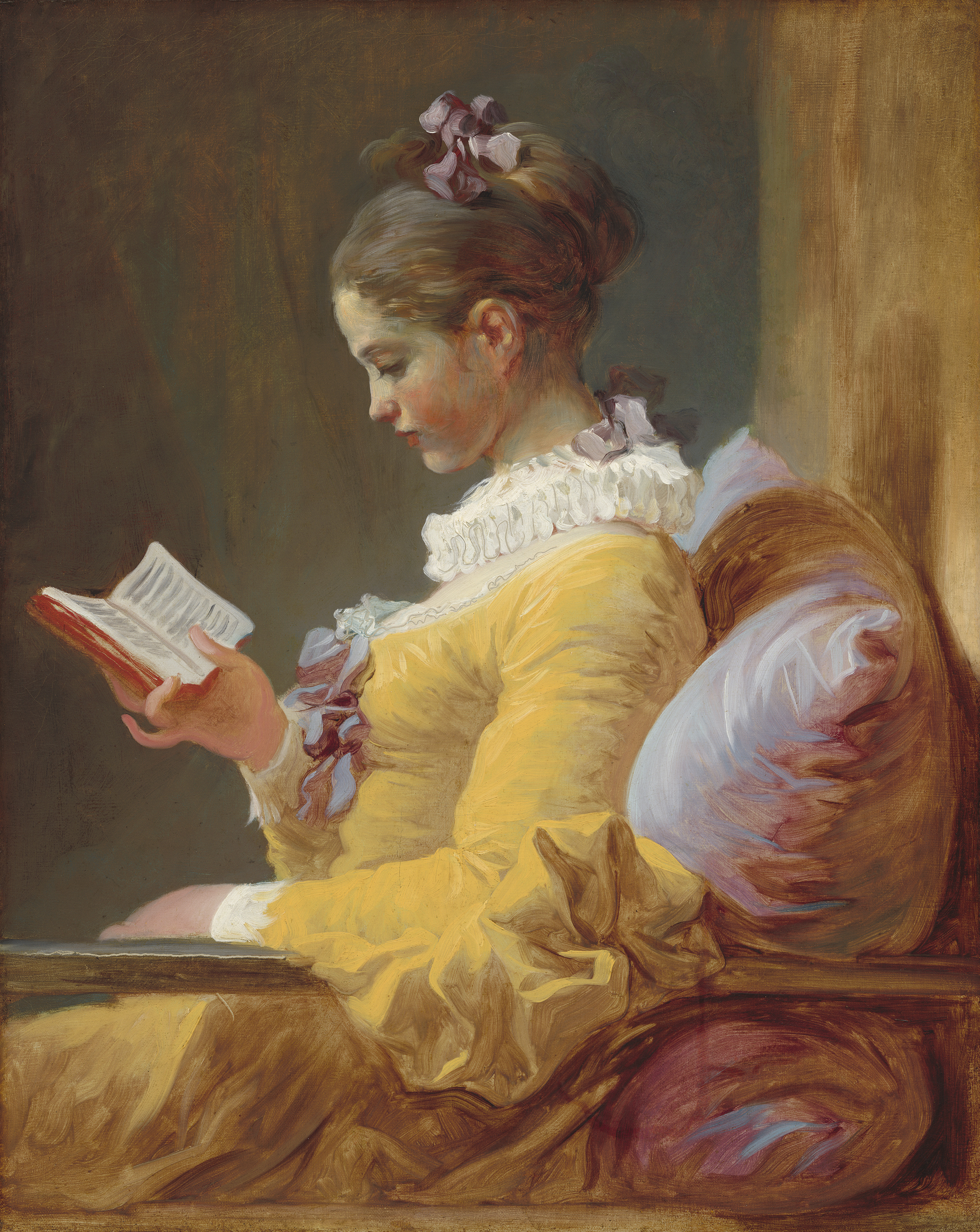FactGrid:The FactGrid Prose Fiction Project: Difference between revisions
Olaf Simons (talk | contribs) No edit summary |
Olaf Simons (talk | contribs) No edit summary |
||
| Line 2: | Line 2: | ||
[[File:Fragonard, The Reader.jpg|right|400px]] | [[File:Fragonard, The Reader.jpg|right|400px]] | ||
([[Item:Q195135|Field of Research:Q195135]]) Early modern readers were expected to laugh about the medieval romances and legends that had flooded the European book market from the 1470s into 1570s | ([[Item:Q195135|Field of Research:Q195135]]) Early modern readers were expected to laugh about the medieval romances and legends that had flooded the European book market from the 1470s into 1570s with the help of the new printing presses. With a more sophisticated taste one could enjoy "satirical romances" and shorter "novels" — "romances", however, had become a precarious production. The alternative to all this fictionality was "literature", the field of learning. | ||
Things began to change strangely in the course of the late 17th and early 18th centuries: The | Things began to change strangely in the course of the late 17th and early 18th centuries: The "belles lettres" had become an accepted part of "literature" in the fashionable centres of Paris, The Hague, London and Leipzig. And then, in the 1750s, one could see the entire concept of learned "literature" succumbing to the tide of new novels, plays and poetry, that were now suddenly asking to become the chief subject matter of modern literary criticism. Two decades later, in the 1770s and 1780s the new world of "national literatures" had arrived with the longest tradition imaginable. The fictional had become the natural base of all national literatures. | ||
How was this possible? How could the fictional move from the disrespected fringes of folklore and superstition through the fashionable realm of the international "belles lettres" into the centre of the new "literary" production that eventually entered the school systems in the course of the 19th century? Who steered this process? The market? New journals that created the new appreciation of the fictional? The nations as customers of the secular topic that could be interpreted and appreciated | How was this possible? How could the fictional move from the disrespected fringes of folklore and superstition through the fashionable realm of the international "belles lettres" into the centre of the new "literary" production that eventually entered the school systems in the course of the 19th century? Who steered this process? The market? New journals that created the new appreciation of the fictional? The emerging nations as customers of the new secular topic that could be interpreted and appreciated by national experts? How did genres react in these processes — as containers of productions that could demand new debates and eventually the new appreciation of “literature proper"? Can we map individual developments? Can we quantify them? Did secondary discourses reflect them or did they create them? The FactGrid prose fiction project wants to enable researchers to interconnect, categorise and explore titles of their various research projects with the broader perspective on the European market — cooperatively and across the boundaries of our present philologies. | ||
== Database Queries == | == Database Queries == | ||
Revision as of 17:44, 28 July 2022
back to Early Modern Projects
(Field of Research:Q195135) Early modern readers were expected to laugh about the medieval romances and legends that had flooded the European book market from the 1470s into 1570s with the help of the new printing presses. With a more sophisticated taste one could enjoy "satirical romances" and shorter "novels" — "romances", however, had become a precarious production. The alternative to all this fictionality was "literature", the field of learning.
Things began to change strangely in the course of the late 17th and early 18th centuries: The "belles lettres" had become an accepted part of "literature" in the fashionable centres of Paris, The Hague, London and Leipzig. And then, in the 1750s, one could see the entire concept of learned "literature" succumbing to the tide of new novels, plays and poetry, that were now suddenly asking to become the chief subject matter of modern literary criticism. Two decades later, in the 1770s and 1780s the new world of "national literatures" had arrived with the longest tradition imaginable. The fictional had become the natural base of all national literatures.
How was this possible? How could the fictional move from the disrespected fringes of folklore and superstition through the fashionable realm of the international "belles lettres" into the centre of the new "literary" production that eventually entered the school systems in the course of the 19th century? Who steered this process? The market? New journals that created the new appreciation of the fictional? The emerging nations as customers of the new secular topic that could be interpreted and appreciated by national experts? How did genres react in these processes — as containers of productions that could demand new debates and eventually the new appreciation of “literature proper"? Can we map individual developments? Can we quantify them? Did secondary discourses reflect them or did they create them? The FactGrid prose fiction project wants to enable researchers to interconnect, categorise and explore titles of their various research projects with the broader perspective on the European market — cooperatively and across the boundaries of our present philologies.
Database Queries
- All titles presently listed as "prose fiction" (1,448 entries as of 27 March 2021)
- All places of publication (without fictitious claims) map view / all the misleading statements
- Title page focus
- Genre/sujet
- Plot ingredient
- Protagonists
